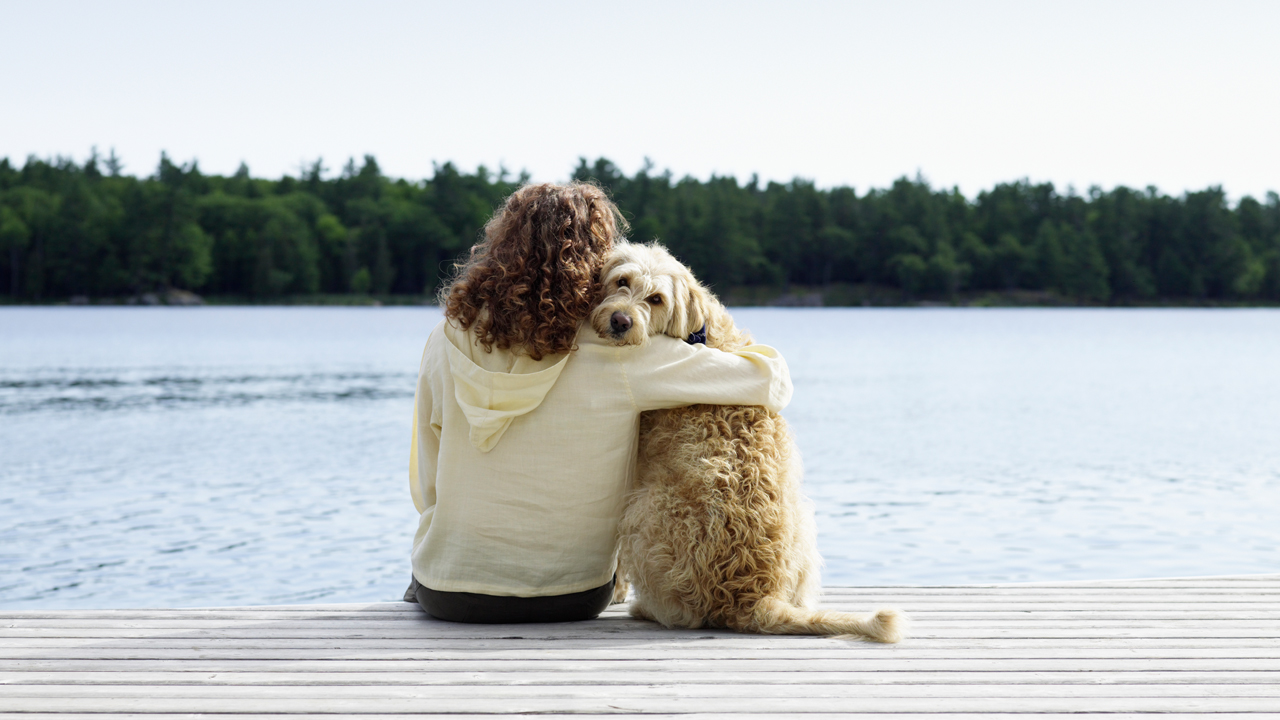How to decode your pet's behaviour

Ever wondered if your pet is trying to tell you something? We took a closer look at the meaning of pet behaviour - you might be surprised at what we found.
Unless your pet is Ed the horse or Lassie the dog, you've probably found yourself in a situation where you have no clue what they are trying to tell you with a particular behaviour. The way your pet pants, rolls over and runs may all have something to do with a message they're trying to send you. Whether you're wanting to become a dog whisperer or are simply interested in what certain actions your cat does mean, take a look at what these behaviours may indicate:
Chewing Furniture
This could be because of discomfort in their gums as their adult teeth are settling into the jawbone. Other possibilities include, attention seeking; distress at being left alone; or an unbalanced diet. It’s also quite common for chewing to indicate that your pet is bored and needs more activity in their life. Make sure you’re taking your furry friend for plenty of walks and that, where you can, you give them space to roam free outdoors.
Peeing
As I am sure you know, pets urinate to mark their territory, but there are also times where they can pee as a negative response to the presence of someone they don't like. Just be mindful of people that come in contact with your animal and do everything you can to ensure everyone is comfortable. If you know someone is coming over to your place that your pet doesn’t like, perhaps it is a good idea to put them outside with some food and toys.
Licking
Animals don’t have the use of verbal communication so there way of communicating is through actions. Licking is their way of either showing affection, or it can also sometimes be a request for food.
Smiling
At one point or another many pet owners have claimed to have witnessed their little friend smiling back at them. And so it turns out, they’re right. When an animal is content their muscles relax and this is most commonly observed in the face. Instead of your pet clenching its teeth together, it will relax its mouth and might even let it hang open. The eyes will appear soft and the ears straight.
Growling/hissing or making an angry sound
Like humans when animals make an angry sound or face, they are trying to tell you they’re uncomfortable. This could be that they are scared, trying so show dominance, want to be left alone or feel in danger. If they are showing their teeth or claws, they are presenting their weapons and sending a clear message to back off – and you should do just that. Give your pet some space. Do this slowly though. Keep your arms folded, don’t make eye contact and keep calm. Don’t walk away straight away. Wait until the situation has settled or your pet walks away first.
Standing tall
An animal who wants to tell the world they are in charge is going to stand tall and try to make themself as big as possible. Cats might prance around and a dog might also raise its tail over its body like a flag to make certain no one fails to see it.
Lying low
It makes sense that if an animal wanting to be noticed it stands tall, and that one who goes low is trying to fly under the radar. A scared or shy animal will lower its body and drop its tail. Furthermore, if it is scared to the point of feeling anxious, it may even roll onto its back. Essentially they’re saying “I’m just a little animal, don’t hurt me.”
Tail wagging
If you think that a quick wagging, swaying or moving tail means you have a happy pet on your hands, well, you’re not alone. But more often than not it actually translates to an animal telling you to back off. The higher the tail, the more dominance your pet is trying to display. The faster the tail is moving, the more excited your fury friend is. However, if the tail is moving in a flicking like manner, this could possibly be a sign of aggression. On the other side of it, if your pet’s tail is low and moving slowly it could be a sign they’re feeling insecure or distressed. This is when you should stop what you’re doing and spend some time with your little friend.
Staring at you
Big puppy dog eyes or doe cats eyes gazing at you is likely to have you gushing and thinking, “Oh, how adorable” and then you’ll probably give them a treat. As cute as they might be, they might not be looking at you lovingly and rather letting you know that they are the boss. So you might want to think twice before rewarding them with a treat for “being the boss” – as you that would prove them right. On the other hand, pets will also stare at you when they want to know what’s happening – for instance where you’re going; where you might throw a ball or whether you’re going to offer them some of that food you’re cooking.
Images: Getty
